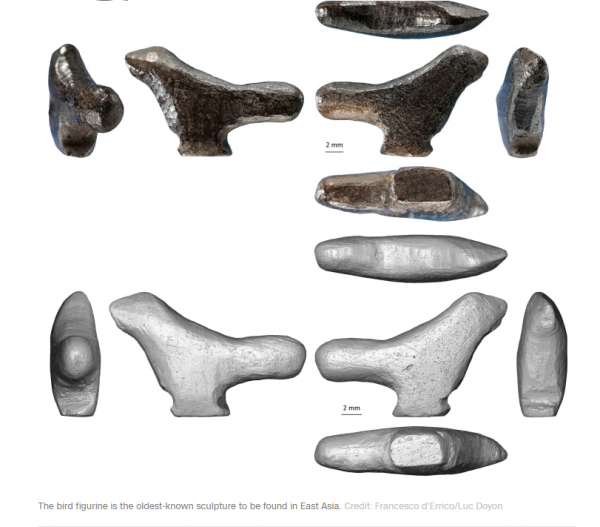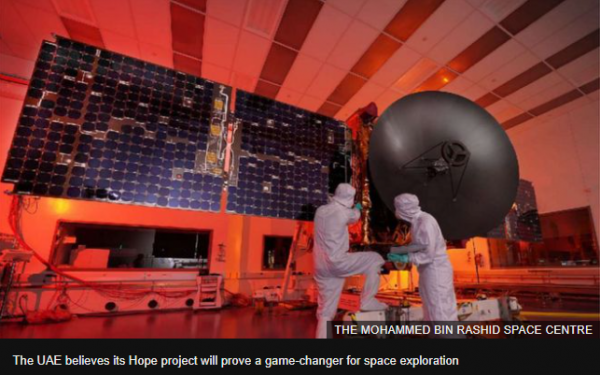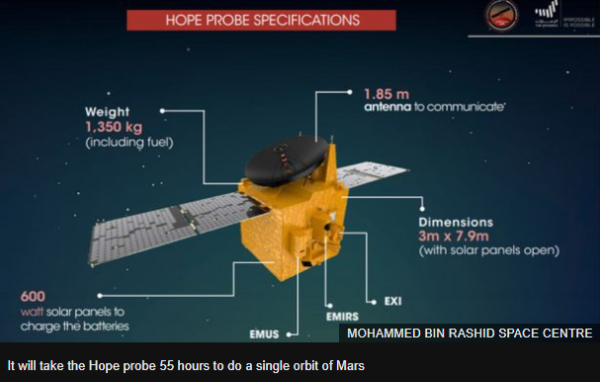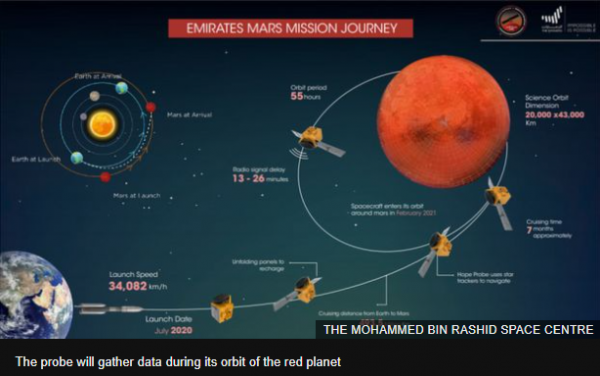-
Posts
20,850 -
Joined
-
Last visited
-
Days Won
49
Everything posted by CaaC (John)
-
Giant kookaburra sculpture is bringing joy -- and plenty of laughter -- to one Australian town Many of us have been flexing our creative muscles in recent months, making the most of the coronavirus lockdown to get stuck into those DIY projects we've been putting off. But few such efforts have been as ambitious as this one. An Australian sculptor has built a 13-foot-high electronic kookaburra -- which even makes the same movements and noises as the famous Australian bird. Farvardin Daliri has taken his 1,600-pound creation on trips around his neighbourhood, towing it from the back of his car -- and he's planning to take it on tour when the lockdown is eased. "They say why? Why not, you know?" Daliri told CNN affiliate Seven News when asked why he's spent the past six months making the giant kookaburra replica. "People love it. It is something extraordinary," he added of his work, which has been popular with neighbours in his home town of Moggill, in Queensland, northeastern Australia. Kookaburras are kingfishers native to Australia, and the call of a laughing kookaburra is intimately associated by many with the Australian bush. Daliri said on Twitter that he used "steel, fibreglass, bamboo and ply boards" to make his version and that the process "took decades of practice." The sculptor runs a festival in the Queensland city of Townsville and plans to show off his creation there. "He's having the biggest laugh himself at how much people love this thing! He's stoked!" his daughter Rafaan Daliri wrote on Twitter. Remarkably, it's not the first time Daliri has created a giant version of a popular Australian creature. Last year, he built a 1,500-pound koala, which he toured around Brisbane. https://edition.cnn.com/style/article/kookaburra-australia-replica-scli-intl/index.html
-
Wild weather here, mist, rain and bloody cold.
-
Imagine swimming underwater and seeing that creeping towards you, I would shite a brick and get out of the water quick smart
-
World’s longest animal discovered in Australian waters The 46-metre-long siphonophore was found lurking 625 metres beneath the waves off the Western Australian coastline. By Jason Goodyer 09th June 2020 A deep-sea expedition led by the Schmidt Ocean Institute has discovered 30 potentially new species of marine creatures, including a siphonophore that’s thought to be the longest animal ever observed. It has been estimated to be 46 metres long, nearly six times the length of a Routemaster double-decker bus. Though they appear to be a single animal, each siphonophore is in fact a colony of organisms that clone themselves thousands of times and join together to form long chains. Like jellyfish, they have stingers that ensnare, paralyse and kill prey. The discoveries were made using ROV SuBastian, a remotely operated robotic vehicle that’s capable of diving to depths of 4.5 kilometres. The expedition in pictures ROV SuBastian is lifted back on deck after a day of diving © Greg Rouse Scripps Oceanography/Nerida Wilson/FK200308 team The 46m-long siphonopore is thought to be the longest animal ever discovered The expedition found several other species that may be new to science Chief scientist Dr Nerida Wilson takes samples of a hymenaster, a type of deep-sea starfish, for DNA profiling This zoarcid fish was collected from a trap mounted on the lander This rare deep-sea hydroid, a close relative of corals and anemones, was found 2.5km deep in Cape Range Canyon This squat lobster species are distributed all over the globe, but this is the first time one has been found in Western Australia https://www.sciencefocus.com/news/worlds-longest-animal-discovered-in-australian-waters/
-
Is the Betelgeuse star about to explode? The supergiant star has been behaving strangely in recent months. Could it be about to go supernova? In the constellation of Orion, something strange is afoot. In October 2019, the red star Betelgeuse – which marks Orion’s right shoulder (or left as we look at it) – began to get unusually dim. During January and February 2020, it reached a record low – around 40 per cent of its usual brightness. We know that Betelgeuse is a mature star and that it will one day explode in a supernova. But this dimming has led to speculation that a supernova could be imminent. Might this be a moment of calm before the star expires in a cosmic death-blast? The dimming of Betelgeuse (the name of the star has its origins in Arabic, and there’s no consensus on how to pronounce the Westernised version, but ‘Beet-el-joos’ is one of the more common variants – as popularised in the 1988 film Beetlejuice) is not completely unexpected. It’s what’s known as a ‘variable’ star, whose brightness fluctuates. In Betelgeuse’s case, this fluctuation follows a roughly 420-day cycle, and – in line with this cycle – there are now signs that the star is slowly brightening again. The science of Picard with Dr Erin Macdonald, Star Trek’s newest science consultant How do stars die? “But even if Betelgeuse perks up, it still leaves us with questions,” says Dr Emily Levesque, an astronomer who studies the physics of massive stars at the University of Washington. “It’s got so much dimmer than normal – way more than we would expect.” Betelgeuse is a red supergiant – the largest class of stars in the Universe in terms of volume. It has a radius of around 600 million kilometres: if you plonked Betelgeuse in the middle of the Solar System – where the Sun is – it would reach almost to Jupiter, engulfing Mercury, Venus, Earth and Mars. Red supergiants form when a massive star runs out of hydrogen in its core and can no longer convert hydrogen into helium via nuclear fusion. At this point, the core begins to contract, which raises the star’s internal temperature and ignites a shell of hydrogen fusion around the core, causing the star’s outer layers to expand and cool. The temperature inside Betelgeuse’s core is so hot that the helium there has begun to fuse into carbon. Once the helium is exhausted, the core will rapidly work its way through heavier elements, all the way to iron. At this point, the star can generate no more energy, so the core will collapse. The outer layers will follow, bouncing off the core and exploding in a supernova. Why is Betelgeuse dimming? So could the dimming be a sign of an imminent supernova? Levesque admits that we still know very little about what a star will do in the final days and weeks before it explodes. But she says that the best guess for when Betelgeuse will die, according to where scientists think it is in its life cycle, is in 100,000 years. “A supernova tomorrow is not flat out impossible,” she says, “But it’s unlikely.” So what’s responsible for the recent dimming? Betelgeuse’s usual 420-day pulsation cycle – which is caused by variations in the star’s size – cannot alone account for the dimming, says Levesque, so there’s probably at least one other mechanism going on. One possibility is that the star is being obscured, making it appear dimmer. “We know that stars like Betelgeuse periodically shed mass from their surface, which condenses into dust around the star,” she says. “This would effectively block our view.” “We also know that red supergiants have big convective zones on their surfaces,” says adds. Hot gas from deep inside the star rises to the surface, where it cools and sinks again. Changes in this circulation could be altering the star’s surface temperature, and hence its brightness – another possible explanation for what’s going on. ‘Oumuamua: Why did we think it was aliens? Mark Miodownik: Are biodegradable plastics really better than traditional plastic? The Late 40s: is this the most miserable time of our lives? Whatever Betelgeuse is currently doing, there’s no question that it’ll explode at some point. “It’ll be absolutely unmissable,” says Levesque. “The star is only a few hundred light-years away, so the light from the supernova will be incredibly bright – comparable to Venus or the Moon.” We’ll see it in the sky as a pinprick of light – even during daytime – and our telescopes will be able to see the nebulous ‘supernova remnant’ in all its glory. But don’t worry: although Betelgeuse is relatively close to us, it’s still far enough away that there’ll be no danger from the supernova’s high-energy radiation. As for Betelgeuse, it’ll most likely become an ultra-dense neutron star. In the meantime, astronomers are getting all the data they can. “As we study more of these red supergiants, we should get better at pinpointing what stage of their evolution they’re in, and when they’re likely to die,” says Levesque. “We know that stars like this make most of the elements in the Universe – both when they’re alive and when they die as supernovae. Understanding how this works will tell us more about how the make-up of the Universe evolved. These stars seeded the chemistry that made life possible.” https://www.sciencefocus.com/news/is-the-betelgeuse-star-about-to-explode/
- 1,657 replies
-
- space exploration
- astronomy
-
(and 1 more)
Tagged with:
-
Mining firm BHP halts plan to disturb Aboriginal sites after outcry Miners desecrated Aboriginal site The mining giant BHP has halted plans to expand a mine in Western Australia because of concerns it could destroy dozens of indigenous heritage sites. It follows a public outcry over the destruction of a 46,000-year-old site by another firm, Rio Tinto, last month. BHP had been granted approval to work on up to 40 sites in the remote Pilbara region as part of its expansion of an iron ore mine. But on Thursday, it said it would consult further with Aboriginal groups. "We will not disturb the sites identified without further extensive consultation with the Banjima people," a statement said. "That consultation will be based on our commitment to understanding the cultural significance of the region," it added. "This will include further scientific study and discussion on mitigation and preservation." It is not clear how the delay will affect the development of the AUD$3.6bn (USD$2.5bn; £2bn) South Flank mine, which is near the town of Newman. It is due to start producing iron ore next year, local media report. Earlier this week, Western Australia's Aboriginal Affairs Minister Ben Wyatt said he had approved BHP's application to "impact" 40 heritage sites in the iron-ore rich region. "No objections were filed and I approved the notice on 29 May," he said in a statement. Mr Wyatt, who is Aboriginal, added that the area covered by the application was subject to a 2015 land-use agreement that limited the Banjima people's ability to contest government approval, but promised co-operation from the mining company. The chairman of the Banjima Native Title Aboriginal Corporation, Maitland Parker, said in a statement: "As a matter of lore and culture... the Banjima people do not support the destruction of sites of cultural significance." The decision to halt the expansion of the mine comes shortly after Rio Tinto destroyed two indigenous caves in the Juukan Gorge, about 1,075 km (667 miles) north of Perth. The company later apologised for blowing up the caves, which date back to the last Ice Age, saying it was "sorry for the distress we have caused". "We are reviewing the plans of all other sites in the Juukan Gorge area," it said in a statement. Many prehistoric artefacts have been found at the remote heritage site. The destruction of the caves sparked protests and calls for urgent reform of heritage protection laws in Western Australia. https://www.bbc.co.uk/news/world-australia-53015925
-
'Baby dragons' go on display in Slovenia Slithering through their subterranean aquarium, three "baby dragons" have gone on display in a Slovenian cave, where they hatched in 2016 in a rare successful breeding, officials said Thursday. Only 30 visitors per day will be allowed to visit the so-called baby dragons -- ancient underwater predators that can live up to 100 years and only breed once in a decade. "We are proud to present three out of the 21 baby olms, the world-famous 'dragon's offspring', which we have kept a close eye on since 2016," the Postojna cave said in a statement. The three are among 21 offspring that hatched in 2016 when one of the olms at the cave lay around 60 eggs in one of the observation tanks. To ensure their survival and gather more information about the creatures, cave authorities kept them far from visitors in a cave laboratory as their "best kept and most carefully guarded secret" -- until now. Reaching a maximum length of 35 centimetres (13.5 inches), the blind animal with its four tiny limbs is a far cry from the scary monsters conjured up in national folklore. Sometimes also referred to as "human fish", the slim vertebrate sports three feathery gills on each side of its elongated snout. The body's sheer pink skin makes it easy to spot the internal organs. The protected eel-like species can go without food for up to a decade. Found primarily in Balkan cave rivers, the olms have been living in the world-famous Postojna cave, 50 kilometres (30 miles) southwest of the capital Ljubljana, for what researchers say is millions of years. The baby dragons' presentation comes only days after the cave -- one of Europe's largest that usually draws 700,000 visitors a year -- reopened its doors following three months of closure due to the coronavirus epidemic. https://www.msn.com/en-gb/news/offbeat/baby-dragons-go-on-display-in-slovenia/ar-BB15opY9
-
NASA's Artemis moon mission aims for an ice economy © Provided by Quartz A footprint left by one of the astronauts of the Apollo 11 mission shows in the soft, powder surface of the moon on July 20, 1969. Commander Neil A. Armstrong and Air Force Col. Edwin E. The urge to voyage beyond what we know is at the heart of the human experience. Often, this is driven by some rare commodity—spices and silks, gold, or oil. How about water? The analogy may sound insane since water is fairly plentiful here on the ground. But the unique physics of space travel means that going to the moon to get water might actually boost the space economy. The presence of frozen water on the moon is a key motivating factor for plans to send a new wave of robotic and eventually human explorers back to the moon. That ice is one of the first real resources that humans can use in space—for drinking water, for hydroponic agriculture, and once split into its component elements, oxygen to breathe and propellant for rockets. This week, NASA administrator Jim Bridenstine offered a hint as to how access to that water will come about, tweeting that “for the Artemis Moonbase, NASA will establish a cost per ton delivered and once again let private companies innovate.” Talk of a moon base is a ways off: NASA’s current goal is to get astronauts back on the moon for a brief visit by the end of 2024, but that is unlikely to be realized. The viability of this dream also depends on how exactly the ice, which we’ve only spotted with remote sensors, is distributed on the moon. A series of robotic explorers expected to arrive in the next several years should help answer that question definitively. Today, NASA announced that the US company Astrobotic received a $199.5 million contract to carry a NASA rover called VIPER (Volatiles Investigating Polar Exploring Rover) to the moon in 2023. But the water economy of space is too fascinating not to think about some more. The hinge of the whole idea is gravity. One of the most expensive things about space is getting there—escaping Earth’s gravity requires the use of chemical rockets to generate the massive energy needed to break free. That means paying a premium for anything you need to bring with you. If those necessities were already available in space, the cost of getting the bare minimum up from Earth would go down significantly. The chemicals behind rocket propellants are plentiful on Earth, but getting them to low-Earth orbit, where the International Space Station (ISS) lives, raises the price significantly. Going further, to geocentric orbits where satellites hang high above the Earth, is even more expensive. Take it to a Lagrange point between the Earth and the moon, a likely spot for a future space platform, or down to the moon, and the costs become astronomical. Harvesting them on the moon, however, could be comparatively cheap, as is flying them from the moon’s low gravity to various orbits around the Earth. In theory, a market for lunar propellant could make it cheaper and more effective to operate large satellites by refuelling them, instead of making them carry fifteen years’ worth of propellant up from the ground. That implies a host of benefits to life on Earth: Improved satellite internet and navigation services, better remote-sensing data about weather, climate change and economic activity, and the possibility for innovative new products manufactured in low-Earth orbit. It could also lower the costs of operating the ISS, enable long-term stays on the moon, and make missions to Mars much cheaper, as well. An analysis performed by the Space Resources Roundtable offers a suggestive depiction of how much it costs to produce and transport propellant—liquid oxygen and liquid hydrogen—to various points: The challenge will be kick-starting the market—the capital investment required to create the infrastructure to extract water from lunar ice will be huge, and there’s no obvious buyer for it now. That’s why Bridenstine’s statement is so important: If NASA follows through by saying we’ll pay $X for propellant delivered to location Y, that could give hypothetical lunar mining entrepreneurs the market they need to get off the ground and encourage private propellant buyers to make their own plans to use these resources. (One technological wrinkle will be designing spacecraft for regular refuelling.) “Wow, this is extremely important!!” Elon Musk, SpaceX’s founder, tweeted in response to Bridenstine. This is a model adapted from the commercial crew program that just saw SpaceX carry astronauts to the space station on the cheapest spacecraft the US has ever built—tell the market what you need and let it provide, rather than develop a NASA-led effort. It’s proven an effective strategy for replicating past NASA accomplishments quickly and efficiently. But when it comes to mining the moon, well, that’s a new frontier. https://www.msn.com/en-gb/news/offbeat/nasas-artemis-moon-mission-aims-for-an-ice-economy/ar-BB15mItl#image=1
- 1,657 replies
-
- space exploration
- astronomy
-
(and 1 more)
Tagged with:
-
They all sound good so best of luck, I love History plus when the word security is mentioned it gives me a wee tingle being an ex-army man and doing security work after leaving the army, but at the end of the day it's your choice so go for whatever.
-
Fossil tracks left by an ancient crocodile that 'ran like an ostrich' Scientists have been stunned to find that some ancient crocodiles might have moved around on two feet. The evidence comes from beautifully preserved fossil tracks in South Korea. Nearly a hundred of these 18-24cm-long indentations were left in what were likely the muddy sediments that surrounded a lake in the Early Cretaceous, 110-120 million years ago. The international team behind the discovery says it will probably challenge our perception of crocodiles. "People tend to think of crocodiles as animals that don't do very much; that they just laze around all day on the banks of the Nile or next to rivers in Costa Rica. Nobody automatically thinks I wonder what this [creature] would be like if it was bipedal and could run like an ostrich or a T. rex," Martin Lockley, an emeritus professor at the University of Colorado, US, told BBC News. The study is sure to provoke a lively debate. Not all researchers will necessarily accept the team's interpretation. FULL REPORT
-
Another mysterious radio burst in space is repeating a pattern. This one occurs every 157 days FRAMES - 1/182 (CNN) For the second time ever, astronomers have detected a pattern in a mysterious fast radio burst coming from space. Fast radio bursts, or FRBs, are millisecond-long bursts of radio waves in space, and astronomers have been able to trace some radio bursts back to their home galaxies. They have yet to determine the actual cause of the bursts. Individual radio bursts emit once and don't repeat. But repeating fast radio bursts are known to send out short, energetic radio waves multiple times. Previous observations showed that usually when they repeat, it's sporadic or in a cluster. That all changed earlier this year when astronomers found that FRB 180916.J0158+65 had a pattern in bursts occurring every 16.35 days. Over the course of four days, the signal would release a burst or two each hour. Then, it would go silent for another 12 days. Now, they have detected a pattern in a second repeating fast radio burst, known as FRB 121102. During this cyclical pattern, radio bursts are emitted during a 90-day window, followed by a silent period of 67 days. This pattern repeats every 157 days. FRB 121102 has been known as a repeating fast radio burst since 2016. Now, they know it has a pattern. "Until now, only one other repeating FRB was known to show such a pattern in its bursting activity," said Kaustubh Rajwade, lead study author and a postdoctoral researcher in astronomy at the University of Manchester, in an email. "Finding such a pattern reveals important clues as to what could [be] the progenitor of FRBs. A periodicity tells us that the object that is producing FRBs is probably in an orbit with another astrophysical body." The study published Sunday in the journal Monthly Notices of the Royal Astronomical Society. FRB 121102 was the first repeating fast radio burst to be traced back to its source, linked back to a small dwarf galaxy more than 3 billion light-years away in 2017. The fact that this repeating fast radio burst pattern is at least 10 times longer than the one repeating every 16.4 days shows the potential large range for such activity, the researchers said. What's behind the burst pattern? So what could be the cause of FRB 121102's extended pattern? Researchers believed these powerful bursts could be due to the orbit of a massive star, a black hole or a dense neutron star. One potential explanation for repeating fast radio bursts has been the precession or wobbling top motion, of a highly magnetized neutron star's axis. But that may not explain what astronomers are seeing for this particular burst because it lasts so long, the researchers said. That model may be more suited to bursts that repeat over a few weeks. Moving forward, the researchers want to find other repeating fast radio bursts, determine if they also have patterns and see if these two represent the range of patterns. They also want to observe FRB 121102 more and see if the patterns change over time. "Answering these questions will take us closer to the true source of FRBs," Rajwade said. What's sending mysterious repeating fast radio bursts in space? The burst pattern in this study was detected while using the Lovell Telescope at the Jodrell Bank Observatory in the United Kingdom over four years. The telescope is sensitive to faint radio signals and capable of regularly monitoring repeating fast radio bursts that have already been identified. Fast radio bursts were only discovered in 2007, followed by the discovery that some of them can repeat in 2016. Now, researchers know they can have patterns as well. "This exciting discovery highlights how little we know about the origin of FRBs," said Duncan Lorimer, study coauthor, associate dean for research and professor of physics and astronomy at West Virginia University. "Further observations of a larger number of FRBs will be needed in order to obtain a clearer picture about these periodic sources and elucidate their origin." CNN
- 1,657 replies
-
- 1
-

-
- space exploration
- astronomy
-
(and 1 more)
Tagged with:
-
Well done buddy, you have been on here long enough and posted enough times to be one of us, at least you didn't join and post a couple of times and then disappear into the wide blue yonder.
-
Saturn's moon Titan is rapidly migrating away from the planet (CNN)Titan, Saturn's largest moon, is moving away from its planet a hundred times faster than previously established, according to a new study. The giant moon isn't alone in this behaviour; other moons among the 150 known moons in our solar system are also slowly distancing themselves from the planets they orbit, including our own moon. Earth's moon moves about 1.5 inches away each year, according to NASA. This is caused by the moon's gravity tugging on the planet, which creates a temporary bulge in the planet. That energy pushes the moon further away. Saturn's moon Titan is largely covered in organic material, new evidence shows Data collected during NASA's Cassini-Huygens mission to study Saturn and some of its moons have revealed that Titan's migration rate equals about 4 inches per year. The study published Monday in the journal Nature Astronomy. Saturn, the second-largest planet in our solar system, likely formed during the infancy of our solar system 4.6 billion years ago. But scientists are less certain about when the planet's signature rings and many moons formed. Currently, the planet has 82 moons. Titan, which is larger than the planet Mercury, orbits Saturn at a distance of 759,000 miles away. And if it's been moving away from the planet at a rapid rate each year, Titan was likely much closer to Saturn, in the beginning, billions of years ago before migrating. This implies that Saturn's entire planetary system also expanded quickly. Photos: NASA says farewell to Cassini "This result brings an important new piece of the puzzle for the highly debated question of the age of the Saturn system and how its moons formed," said Valery Lainey, lead study author and scientist at Paris Observatory at Université Paris Sciences et Lettres, in a statement. Lainey worked on the study as a scientist at NASA's Jet Propulsion Laboratory. Background stars in images captured by Cassini helped the researchers track Titan. This was also compared with radio data gathered by Cassini over the course of 10 flybys of Saturn between 2006 and 2016. Together, these showed the shift in Titan's orbit as it moves outward. "By using two completely different datasets, we obtained results that are in full agreement, and also in agreement with Jim Fuller's theory, which predicted a much faster migration of Titan," said Paolo Tortora, study co-author and professor of aerospace systems and member of the Cassini Radio Science Team at the University of Bologna in Italy, in a statement. Fuller, a theoretical astrophysicist and assistant professor at the California Institute of Technology, has a theory that both inner and outer moons of planets migrate away at similar rates. Both types of moons get stuck in orbits related to the planet's wobble, which pushes them away. Lakes on Saturn's moon may be explosion craters Fuller's theory, which he published as a research study around four years ago, changed the long-prevailing view that outer moons migrated more slowly than inner moons. This idea was based on the fact that the outer moons are more distant from the gravity of their planet. He is also a co-author of the new study. "The new measurements imply that these kinds of planet-moon interactions can be more prominent than prior expectations and that they can apply to many systems, such as other planetary moon systems, exoplanets — those outside our solar system -— and even binary star systems, where stars orbit each other," Fuller said in a statement. NASA's new mission, Dragonfly, will explore Saturn's moon, Titan Titan is unique in our solar system. It's the only known moon with a considerable atmosphere and the only planetary body in addition to Earth with liquid rivers and lakes on its surface. In 2026, NASA will send the Dragonfly mission to further investigate Titan. It will arrive at the moon by 2034. The Mars rover-size drone will be able to fly through Titan's thick atmosphere for about two and a half years. The ultimate goal is for Dragonfly to visit an impact crater, where they believe that important ingredients for life mixed together when something hit Titan in the past, possibly tens of thousands of years ago. "Titan has the key ingredients for life," said Lori Glaze, director of NASA's Planetary Science Division, when the mission was announced in 2019. "It has complex organic molecules and the energy required for life. We will have the opportunity to observe processes similar to what happened on early Earth when life formed and potentially conditions that could harbor life today." CNN
- 1,657 replies
-
- space exploration
- astronomy
-
(and 1 more)
Tagged with:
-
Hope for pangolins as protection boosted in China Conservation groups have welcomed China's move to remove pangolins from the official list of traditional Chinese medicine treatments, saying this could be a "game-changer". The news, reported by China's Health Times newspaper, comes after China raised the animal's protected status to the highest level last week. Pangolins have been pushed to the brink by illegal hunting for scales and meat. They are implicated in coronavirus, but the evidence is unclear. Conservation charities have welcomed the move to remove them from the official list of traditional Chinese medicines. Paul Thomson of Save Pangolins said it was a breakthrough moment. "China's move to phase out pangolin scales from traditional medicines could be the game-changer we have been waiting for," he said. "We hope China's next move will be to enforce the regulations and work to change consumer behaviour." FULL REPORT
-
-
Spectacular drone footage captures thousands of turtles nesting (CNN) Researchers have captured beautiful aerial footage of thousands of green turtles congregating on the edge of Australia's Great Barrier Reef during the nesting season. Scientists from Queensland Government's Department of Environment and Science (DES) captured the footage using a drone at the world's largest green turtle rookery at Raine Island, a vegetated coral cay approximately 620 kilometres (385 miles) northwest of Cairns. The creatures nest at Raine Island, a vegetated coral cay. Green turtles, named after the colour of their cartilage and fat, are found mostly in tropical and subtropical waters and migrate long distances between feeding grounds and the beaches where they emerged as hatchlings, some 35 years after they were born. Sea turtles are thriving as coronavirus lockdown empties Florida beaches The creatures are endangered and are under threat due to hunting, overharvesting of their eggs, loss of beach-nesting sites and becoming trapped in fishing apparatus. Raine Island is the biggest remaining turtle rookery in the world, but despite attracting a "massive aggregation" of the creatures, scientists noticed that they were not reproducing as expected due to nests flooding and inhospitable terrain. "We sort of became aware that although there are these massive aggregations, the actual reproduction isn't working so well," Dr Andrew Dunstan, from the DES, told CNN Tuesday, explaining that his team noticed turtles were falling off cliffs, becoming trapped in the heat and suffering flooding in their nests. After implementing a series of interventions to help the struggling turtles, scientists then sought to track the population. In research conducted in December and published in the scientific journal PLOS ONE on Thursday, they found that using drones -- or Unmanned Aerial Vehicles (UAVs) -- was the most accurate way of documenting the endangered sea creatures. Green turtles are endangered because of hunting, harvesting of their eggs, loss of nesting habitat and becoming trapped in fishing equipment. In order to count the creatures, researchers had initially painted the turtles' shells with a white stripe of non-toxic paint while they gathered on the beach and then waited for them to return to the water. Plastic bags may smell like food to hungry sea turtles, a new study says When they tried to count the turtles from the boat, they found that they came away with biased results. For accuracy and ease, scientists deployed drones to film the creatures. "Trying to accurately count thousands of painted and unpainted turtles from a small boat in rough weather was difficult. Using a drone is easier, safer, much more accurate, and the data can be immediately and permanently stored," Dunstan, senior research scientist and lead author of the paper, said in a statement. Using drones, the team revealed up to 64,000 turtles swimming around the island waiting to come ashore to lay their eggs. "We were underestimating that a lot. We're finding 1.73 times as many turtles with the drone and as we do when we directly compare with the observer counts," Dunstan told CNN, adding that the team can now go back and adjust historic population estimates. Researchers plan to use the results to understand and manage the turtle population and hope that in the future they will be able to automate the counts from video footage using artificial intelligence. CNN
-
13,500-year-old bird figurine discovered in China is a game-changer for prehistoric art A Stone Age bird figurine uncovered in China could be a "missing link" in our understanding of prehistoric art, according to research published Wednesday. Dating back almost 13,500 years, the sculpture is now the oldest known example of three-dimensional art in East Asia, preceding other discoveries in the region by nearly 8,500 years. Described as being in "an exceptional state of preservation," the figurine was found at an archaeological site in Lingjing, in central China's Henan province. It was hand-carved from burned animal bone using stone tools. Researchers say the sculpture depicts a bird on a pedestal, pointing to deliberate marks where the creature's eyes and bill would be. It is believed that the bird's oversized tail was made to prevent the figurine from tilting forward when laid on a surface. Significantly older artefacts have been discovered in Europe, with mammoth ivory figures from the Swabian Jura region of southern German believed to be more than 40,000 years old. But much less is known about the emergence of sculptural representations in other parts of the world. "This discovery identifies an original artistic tradition and pushes back by more than 8,500 years the representation of birds in Chinese art," the authors said in a press release. "The figurine differs technologically and stylistically from other specimens found in Western Europe and Siberia, and it could be the missing link tracing the origin of Chinese statuary back to the Palaeolithic period." Analyzing techniques As well as using radiocarbon dating to ascertain the object's age, scientists used CT scans to reveal the carving techniques used by the Paleolithic sculptor. They found evidence that abrading, gauging, scraping and incising with stone tools were all used to produce the figurine. The excavation was led by researchers from East China's Shandong University, alongside experts from colleges in France, Israel and Norway. Li Zhanyang, who led the study, has been excavating the site since 2005. Other discoveries there include shards of pottery, burned animal remains and an ostrich egg pendant. Li has contributed to other archaeological findings in Lingjing, including a variety of ancient tools and two skulls belonging to an extinct species of early human. In 2019, he led a study into two engraved bones, also found in the region, that may date back 125,000 years. CNN
-
It's haunting for me looking at old b&w photos from years gone by, like below, the first photo was our two grandsons on Portobello Beach here in Leith where we live taken by our daughter in 2018 and the other old photos below of the beach, to think our two grandsons were running around on the same beach as were the other people years ago, nostalgic. 2018 1920's
-
Beards off gave my hair a bit of a trim, the wife is happy as she said I looked a right scruff, cost her a few pints though
-
Archaeologists may have uncovered London’s earliest playhouse London’s earliest playhouse, which “marked the dawn of Elizabethan theatre”, may have been found at a site in Whitechapel, archaeologists have said. The Red Lion playhouse is thought to be the earliest known purpose-built theatre of the Elizabethan era, but its exact location has long been debated. Discoveries of timber structures, artefacts and buildings that could indicate the playhouse has been found were made by Archaeology South-East, part of UCL’s Institute of Archaeology, ahead of a housing redevelopment. The Red Lion playhouse was set up by John Brayne, who went on to construct The Theatre in Shoreditch with his brother-in-law, James Burbage, father of famed Elizabethan actor Richard Burbage. The Theatre was the first permanent home for acting troupes and a venue for Shakespeare’s plays in the 1590s, as drama flourished in Elizabethan London. All that is known of The Red Lion is from two lawsuits, the first of which dates from 1567, the year the playhouse is thought to have been built, describing the timber scaffolds or galleries around the stage. A second lawsuit from 1569 mentions a “farme house called and knowen by the name of the Sygne of the Redd Lyon”, as a site with an outdoor stage and seating. It includes a description and dimensions of the stage as 40ft (12.2m) north to south by 30ft (9.1m) east to west and a height of 5ft (1.5m). Experts said analysis of historic mapping and land deeds relating to the Red Lion suggested it was on or near the Whitechapel site, but before the excavations, there was no physical evidence of the playhouse or farm. Archaeological excavations in January 2019, ahead of housing redevelopment in Stepney Way, started to uncover an unusual rectangular structure with 144 surviving timbers and dimensions that closely matched those of the stage in the lawsuits. Postholes around the timber structure appear to correspond with “scaffolds” or galleried seating, archaeologists said. In the north-east corner of the site, excavations revealed 15th or 16th-century buildings that developed into a sprawling complex in the 17th century, which could be the Red Lion inn itself. Farmsteads of the time were known to serve beer, and the uncovered site was established enough to have had a prototype playhouse on its land by the late 16th century, the archaeologists said. The buildings that have been uncovered include two probable beer cellars, while glass and pottery find include beakers and drinking glasses, ceramic cups and a late 17th-century tavern mug with a royal medallion of Charles II – suggesting the development into a more formal inn. Stephen White, who directed the excavation for UCL Archaeology South-East, said the site is one of the most extraordinary he has worked on. “After nearly 500 years, the remains of the Red Lion playhouse, which marked the dawn of Elizabethan theatre, may have finally been found. “The strength of the combined evidence – archaeological remains of buildings, in the right location, of the right period, seem to match up with characteristics of the playhouse recorded in early documents. “It is a privilege to be able to add to our understanding of this exciting period of history.” Emily Gee, from government heritage agency Historic England, said: “This tantalising find follows the exciting recent discoveries of The Theatre and The Curtain playhouses in Shoreditch, and of the Boar’s Head in Aldgate, which together has immensely improved our understanding of the beginnings of English theatre. “We will continue to work closely with the developer to interpret these archaeological remains and display them so the public will be able to understand them within the finished development and appreciate the rich history of this site.” https://www.itv.com/news/2020-06-10/archaeologists-may-have-uncovered-londons-earliest-playhouse/
-

Newcastle United Discussion
CaaC (John) replied to a topic in Premier League - English Football Forum
Newcastle United could be bought by an American entrepreneur if a Saudi Arabian-led consortium does not complete their proposed takeover of the club. (Telegraph) -
I will try it and show the grandson, do it with some of his Lego toys etc, he will love them.
-
-
UAE Mars mission: Hope project a 'real step forward for exploration' The first Arab space mission to Mars is preparing to lift off within weeks. Fuelling is due to begin next week. It will take seven months to travel the 493 million km (308 million miles) to reach Mars and begin its orbit, sending back ground-breaking new data about its climate and atmosphere. The probe will remain orbiting Mars for an entire Martian year, 687 days, to gather sufficient data. A single orbit around Mars will take the probe 55 hours. In a briefing on Monday, programme director Sarah Al-Amiri said the project should be a major incentive for young Arab scientists to embark on a career in space engineering. The United Arab Emirates reaches for the Red Planet Named Amal, meaning Hope, the robotic craft is due to lift off from a remote Japanese island, Tanegashima, during a narrow launch window on 14 July. Powered by a Japanese rocket, it will be carrying three types of sensors for measuring the complex make-up of Mars's atmosphere. These include a high-resolution multiband camera for measuring the planet's dust and ozone. The second will be an infrared spectrometer for measuring both the upper and lower atmosphere and developed by Arizona State University, one of the project's three US partner universities. The third sensor will be an ultraviolet spectrometer for measuring oxygen and hydrogen levels. Ms Al-Amiri said one of the focuses of the research will be into how these two elements, essential for water, are escaping from the planet. Sir Ian Blatchford, director of the UK's Science Museum Group, pointed out that "a lot of missions have focused on geology, but this will provide the most comprehensive, holistic picture of Mars's climate". The UAE has a track record of space travel. It has sent rockets into the Earth's orbit and one of its astronauts to the International Space Station. Hazzaa Al Mansoori to become first Emirati astronaut The first Arab astronaut to go into space was Saudi Arabia's Prince Sultan Bin Salman Al-Saud, who flew on the US space shuttle in 1985. But this is of a totally different magnitude. The spacecraft was built in the UAE and shipped to Japan, where all its engineers immediately had to go into quarantine due to the coronavirus pandemic, threatening to delay the launch. Monica Grady, professor of planetary and space science at Britain's Open University, believes this Mars mission marks a major change in an industry previously dominated by the major powers of the world. "It's a real step forwards for Mars exploration because it shows that other nations - rather than the European Space Agency and Nasa can actually go there - well we hope it will get there. Mars has a very long history of mission failures," she said. UAE project leaders working on the mission have reminded the world that, eight centuries ago, Arab inventors and intellectuals were right at the forefront of scientific discovery. So today, the ruler of Dubai, one of the seven emirates that make up the UAE, is hoping this ambitious project will rekindle a sense of cultural pride and help the region to diversify away from its dependence on the oil industry. Provided it does reach Mars, Hope will arrive at the red planet in the same year that the UAE celebrates 50 years since its founding as a nation in 1971. Certainly, no one could accuse the country of lacking in ambition. It has vowed to build a human settlement on Mars by the year 2117. https://www.bbc.co.uk/news/world-middle-east-52973849


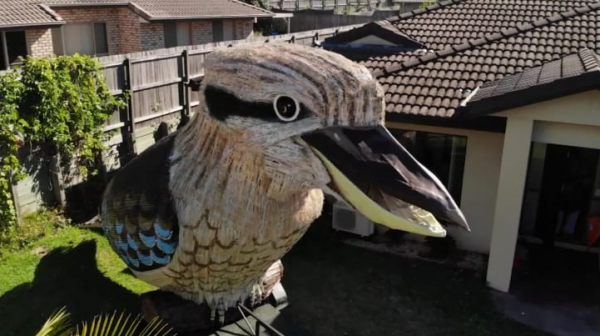





.thumb.png.57ef5253da5d6ebb07bb4f2296c7081b.png)



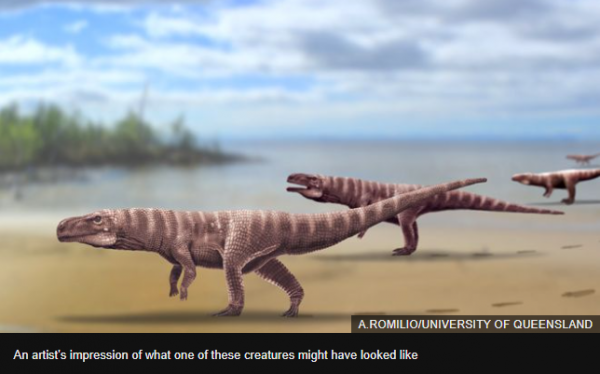

.thumb.png.2eba8c6048dea018ab508102e842e6c5.png)
.thumb.png.4324a008b845a9d7f1f8dbc474de268e.png)

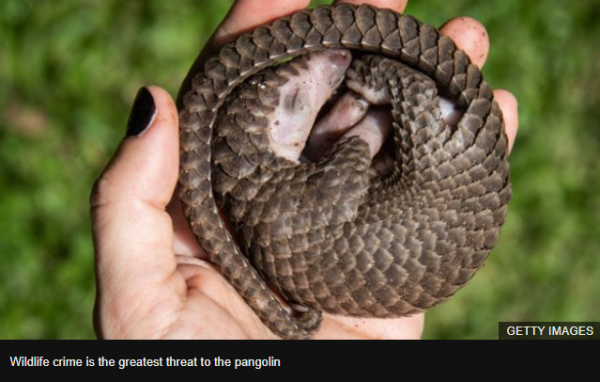

.png.290d214f669d137d0e9f6a36cb69ac1b.png)


